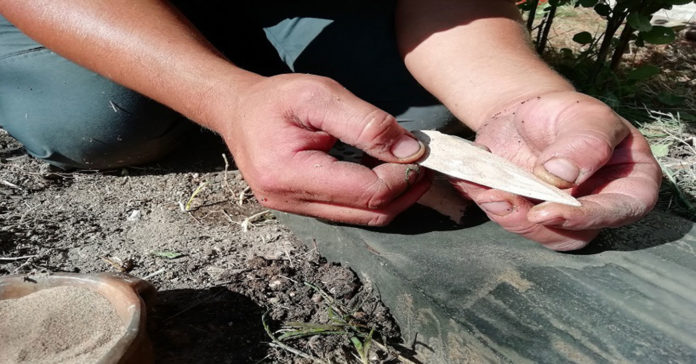Daggers are ubiquitous yet poorly understood artifacts from prehistoric Europe. First appearing in the early 4th millennium BCE, they are widespread in Chalcolithic and Bronze Age Europe. Still, their social and practical roles are still hotly debated.
Are they symbolic or functional? Are they tools or weapons? How were they used? What was their use?
An international research team led by Newcastle University, UK, a new study addresses these questions.
Early metal daggers were long thought to be non-functional insignia of male identity and power due to perceived weaknesses in design and alloy composition. Others suggested that they may have been used as weapons or tools for crafts.
The world’s first extraction of organic remains from ten copper-alloy daggers excavated in 2017 at Pragatto, a Bronze Age village site in Italy, was made possible by a breakthrough new process pioneered by an international research team led by Newcastle University, UK. For the first time, the new method discloses how these objects were utilized, what activities, and what materials.
Scientists stained organic residues on the daggers using a new technique that uses Picro-Sirius Red (PSR) solution. The residues were then observed under several optical, digital, and scanning electron microscopes. Through this, they could determine micro-residues of collagen and associated bone, muscle, and bundle tendon fibers.
This suggests that the daggers had come into contact with multiple animal tissues and were used to process various types of animal carcasses.
After running several experiments with replicas of the daggers created by an expert bronzesmith, scientists found that this type of dagger was well suited to processing animal carcasses. Scientists also analyzed the residue from the experimental daggers and matched those observed on the archaeological daggers.
Professor Andrea Dolfini, Chair of Archaeology, Newcastle University, said: “The research has revealed that it is possible to extract and characterize organic residues from ancient metals, extending the range of materials that can be analyzed in this way. This is a significant breakthrough as the new method enables the analysis of a wide variety of copper-alloy tools and weapons from anywhere in the world. The possibilities are endless, and so are the answers that the new method can and will provide in the future.”
Journal Reference:
- Caricola, I., Charles, A., Tirillò, J. et al. Organic residue analysis reveals the function of bronze age metal daggers. Sci Rep 12, 6101 (2022). DOI: 10.1038/s41598-022-09983-3
